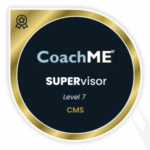
I was delighted to be included on the Influence Digest 2022 Top 15 Coaches list for the greater metropolitan Detroit area–and so grateful for my Detroit area clients! This award was made public on August 30, 2022 and included a profile and bio in the Influence Digest edition available at this link: https://influencedigest.com/coaching/top-coaches-detroit-2022/




 Clara—my ten-year-old quarter horse mare—has been my trail partner since January 2017. I know her well enough to know the difference between her asking for guidance and trying to take the reins herself. She knows me well enough to know when I’m asking her to round her back and lengthen her stride or when my arthritic left leg simply stops working for the day.
Clara—my ten-year-old quarter horse mare—has been my trail partner since January 2017. I know her well enough to know the difference between her asking for guidance and trying to take the reins herself. She knows me well enough to know when I’m asking her to round her back and lengthen her stride or when my arthritic left leg simply stops working for the day.












